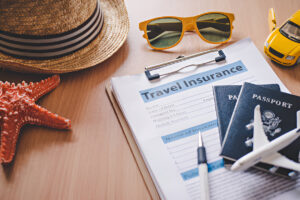Traveling is one of life’s most enriching experiences. Whether you’re considering a cross-country road trip or exploring a different continent, planning the best travel route can make all the difference between a stress-filled trip and an unforgettable adventure. By carefully planning, researching, and optimizing your route, you can ensure your travels are smooth, efficient, and full of enjoyment. This guide will help you learn how to create the perfect travel route for your next adventure.
Initial Research
Before hitting the road or boarding your flight, the first step to planning an ideal travel route is conducting thorough research. Start by deciding on your destination or destinations. Think about what you hope to gain from the trip. Are you looking for breathtaking natural beauty, cultural landmarks, or bustling urban experiences? Once you have a general idea of the places you’d like to visit, immerse yourself in travel guides, blogs, and forums to gather information about must-see attractions, weather conditions, and any seasonal events.
Don’t forget to check for any travel advisories or restrictions. Whether it’s health guidelines or visa requirements, staying informed will save you from unexpected hurdles. Researching local customs and practices can also enhance your experience, especially when visiting international destinations.
Mapping
Once you have a clear sense of where you want to go, it’s time to plot your route. Use digital mapping tools like Google Maps, Apple Maps, or specialized travel apps to visualize your itinerary. Mapping out your travel route will give you a clear picture of the distance between locations, estimated travel times, and potential stopover points.
Consider prioritizing locations that are closer together to minimize the time you spend traveling between destinations. For trips that span across multiple cities or regions, identify the most logical sequence to visit each place. For example, a circular route that starts and ends at the same point may be more efficient than zigzagging across your map. Remember to save offline maps for areas with unreliable internet connectivity. A paper map can also be a handy backup if your devices run out of power.
Accommodation Planning
Deciding where you’ll stay during your trip is an equally important part of route planning. Look for accommodations that are conveniently located along your route, ideally near major attractions or public transportation hubs. Whether you opt for hotels, hostels, vacation rentals, or campsites, ensure that your choices align with your preferences and budget.
For longer trips, consider mixing accommodation styles. You might spend a few nights in a luxury resort for relaxation and other nights in budget-friendly lodgings to save money. Booking in advance can help you secure more affordable rates, especially during peak travel seasons. Read reviews on platforms like Booking.com, Airbnb, or TripAdvisor to identify accommodations that suit your needs. Many travelers also recommend checking facilities like Wi-Fi availability, safety measures, and included amenities such as breakfast.
Transportation Options
Choosing the right transportation method can significantly impact your travel experience. Consider all available options, including renting a car, taking trains, flying, or even embarking on a bike tour. The mode of transportation you choose will depend on factors like distance, budget, and personal preferences.
For example, if you’re planning a scenic road trip, renting a car allows for flexibility and freedom. Trains offer a unique opportunity to enjoy picturesque views and often provide comfort and convenience in regions like Europe or Japan. Air travel may be the best alternative for covering long distances quickly, while bicycles are ideal for city explorations or short countryside tours. Consider combining multiple transportation modes to optimize your travel route, and always make reservations in advance for services like car rentals or intercity trains to avoid last-minute hassles.
Budgeting
Your route should ultimately fit within your financial means, as sticking to a budget is crucial for stress-free travel. Start by estimating all anticipated expenses, including travel fares, accommodation, dining, admission tickets, and miscellaneous costs like shopping or tips. It’s a good idea to create a spreadsheet or use budgeting apps to track your expenses down to the smallest details.
You can reduce costs by taking advantage of deals, discounts, and free activities along the way. For example, many cities offer free walking tours or museum openings on specific days, which can add cultural value to your trip without impacting your wallet. Set aside a portion of your budget for emergencies or unexpected expenses, such as medical needs or delayed transportation.
Flexibility
While planning a detailed travel route is essential, flexibility is key when it comes to enjoying your trip. Unexpected opportunities, like a local festival or a hidden gem that you hadn’t planned on visiting, can present themselves at any moment. Allow room in your itinerary to adapt plans and make spontaneous changes.
It’s also important to consider potential delays or cancellations. Building buffer time into your schedule ensures that a missed bus or a late flight doesn’t derail your entire trip. Keep in mind that the best travel experiences often occur when plans go slightly off-course.
Safety Measures
Your safety should always be a top priority during any travel experience. Before departure, ensure that you have travel insurance to cover potential risks such as medical emergencies, theft, or trip cancellations. Keep important contact details, like local emergency numbers and your country’s embassy information, saved on your phone and written down.
When mapping out your route, research the safety of the areas you’ll be visiting. Avoid regions with political unrest, a high crime rate, or hazardous weather conditions. Keep copies of important documents like passports, visas, and travel itineraries in both digital and physical formats. Additionally, trust your instincts while on the road. Avoid sharing too much personal information with strangers and keep your belongings secure at all times.
Sustainability Considerations
Sustainable travel is increasingly important as we become more mindful of our environmental impact. When planning your travel route, consider options that minimize carbon emissions, such as traveling by train or bus instead of flying short distances. Many destinations now encourage eco-friendly tourism with initiatives like renewable energy accommodations or bike rental programs.
Support local businesses by dining in family-run restaurants or purchasing souvenirs directly from artisans. Being a considerate traveler also means leaving no trace of your visit, which includes properly disposing of waste and respecting natural habitats.
Plan Your Perfect Route
Planning the best travel route requires thoughtful preparation, but the effort is undoubtedly worth it. By conducting thorough research, choosing convenient accommodations, budgeting effectively, and staying flexible, you can craft a travel experience tailored to your interests and priorities. For more tips about making your travels memorable and stress-free, follow our blog or join our community of travel enthusiasts. The world is waiting for you to explore it. Happy travels!
FAQs
1. How do I decide where to go?
Think about your interests, whether they revolve around scenic routes, cultural experiences, or relaxing getaways. Research destinations that align with those preferences.
2. What are the best tools to help me map my travel route?
Apps like Google Maps, Rome2Rio, and digital guidebooks provide excellent resources for planning and visualizing routes.
3. What should I do if my plans change unexpectedly?
Stay calm and adjust your itinerary. Flexibility is key, so accommodate changes while prioritizing safety.
4. What’s a good budget for a week-long trip?
It depends on your destination and travel style. Calculate expenses for accommodation, transportation, and meals while factoring in an emergency fund.
5. How can I ensure sustainable travel?
Choose eco-friendly accommodations, limit flying, support local businesses, and follow principles of leave-no-trace travel.




